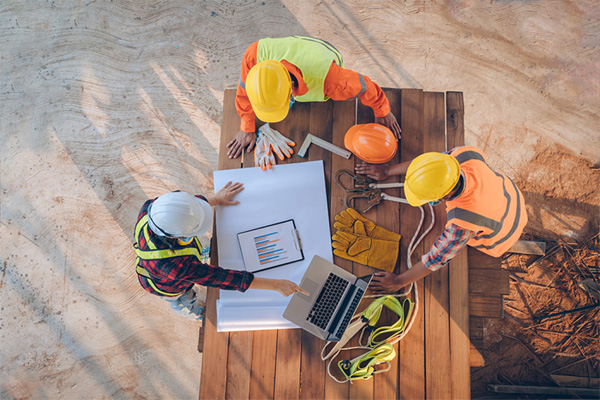Top 10 Training Requirements for Construction Workers

Construction sites are high-risk. So, workers must know how to perform tasks safely and efficiently. Training equips construction workers with the skills and knowledge to achieve this.
This blog explores the importance of training construction workers and how online courses have streamlined the process. It also highlights the top 10 training programmes currently available.
Why is Construction Training Important?
Construction training is crucial for several reasons. First, it enhances safety on worksites. Workers often deal with heavy machinery, heights and potentially dangerous materials. Proper training reduces the likelihood of accidents, injuries and fatalities.
Additionally, well-trained workers are more likely to perform tasks correctly the first time, which keeps projects on time and within budget. Trained workers can also deploy current construction techniques, technologies and safety regulations to increase job efficiency and quality.
10 Construction Training Programmes
1. Health and Safety Training
Workers can prevent accidents and injuries with health and safety training. Training should cover hazard identification, use of personal protective equipment and emergency procedures.
2. Equipment Operation
Construction workers often operate heavy machinery such as forklifts, cranes and excavators. Machine operator training is essential to prevent accidents and ensure the longevity of the equipment.
3. First Aid and CPR
Accidents can happen and immediate response is crucial. Training in first aid and CPR can save lives and reduce the severity of injuries on construction sites.
4. Manual Handling Training
Manual handling training in construction teaches workers how to lift, carry and move materials and equipment safely. It covers techniques to minimise physical strain and prevent injuries through proper posture, lifting methods and the use of mechanical aids.
5. Asbestos Awareness Training
Asbestos awareness training explains locations where asbestos-containing materials (ACMs) may be present. It teaches construction workers how to identify ACMs and avoid disturbing them to minimise the risk of exposure.
6. Fire Safety Training
Construction workers need fire safety training to respond effectively to fire emergencies. Training covers fire prevention, evacuation procedures and the proper use of fire extinguishers. This knowledge lets workers protect themselves and minimise property damage in the event of a fire.
7. Electrical Safety Training
Construction sites often involve electrical hazards. Electrical safety training educates workers on recognising electrical risks, handling electrical equipment safely and following proper lockout/tagout procedures to prevent electrocution and fires.
8. Communication Skills
Communication skills training for construction workers improves efficiency, safety and teamwork. Trained workers understand instructions, ask questions and express concerns clearly, preventing misunderstandings and errors.
9. Working at Height Training
Working at heights poses significant risks in construction. Working at height training teaches workers how to use harnesses, lanyards and other equipment properly to control fall risks and reduce harm should an incident happen.
10. Confined Space Training
Construction workers encounter confined spaces such as trenches, tunnels and tanks that present unique safety challenges. Confined space training familiarises workers with the associated hazards and procedures for safe entry, exit, and rescue.
Importance of Online Training for Construction Workers
Construction workers are able to access training more easily through online platforms. Online training allows workers to complete course modules at their own pace. Workers in remote locations can also access training instantly.
Moreover, construction companies can easily prove compliance compared with traditional in-person training. Online platforms allow users to track progress, understanding and training status to guarantee all workers have received and are applying the necessary training.
Conclusion
Construction work is inherently dangerous but proper training helps reduce risks and create more productive work environments. Trained workers can perform tasks safely and efficiently, avoiding accidents or delays to keep projects on time and within budget.
